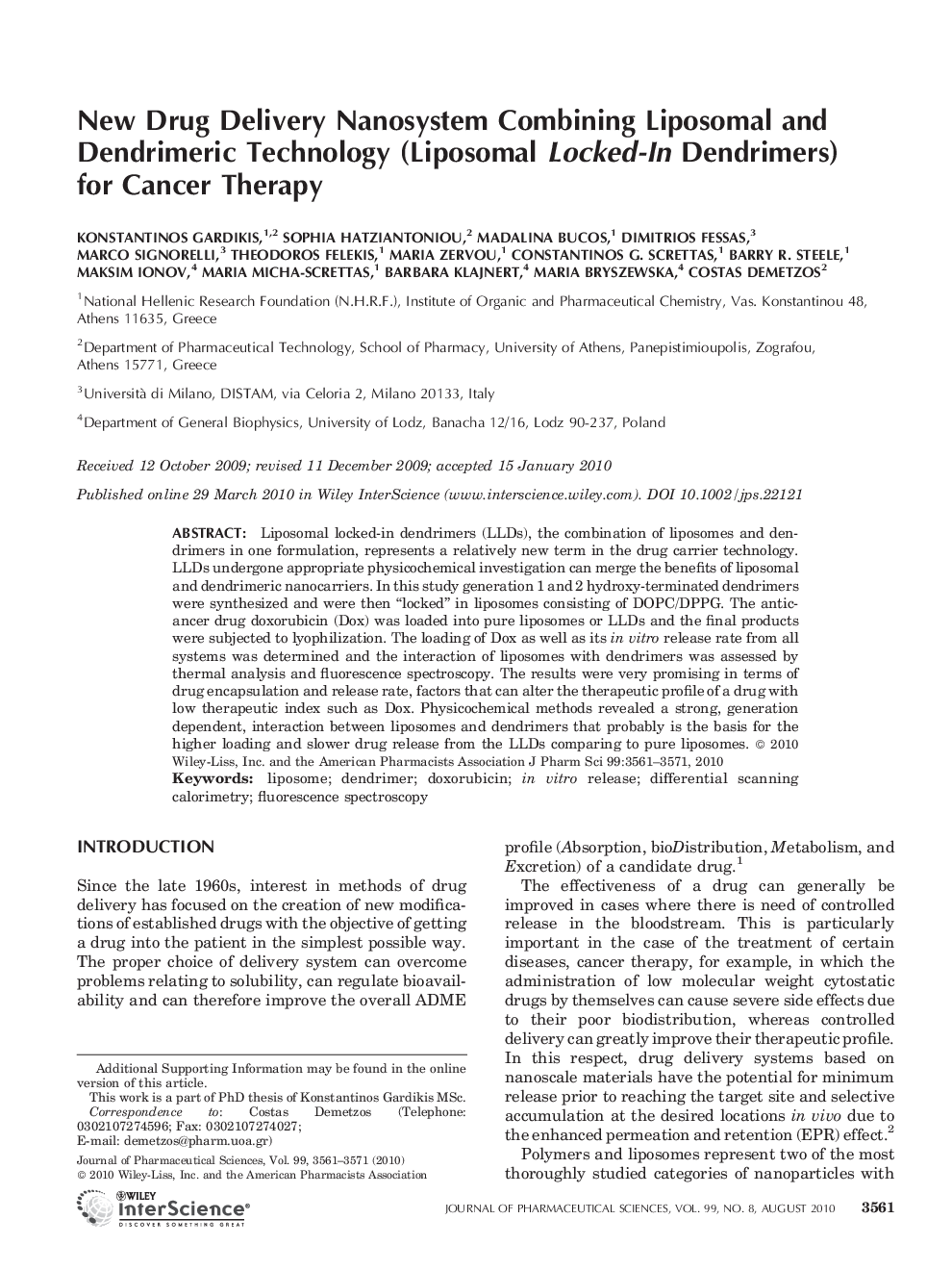| Article ID | Journal | Published Year | Pages | File Type |
|---|---|---|---|---|
| 2486046 | Journal of Pharmaceutical Sciences | 2010 | 11 Pages |
Abstract
Liposomal locked-in dendrimers (LLDs), the combination of liposomes and dendrimers in one formulation, represents a relatively new term in the drug carrier technology. LLDs undergone appropriate physicochemical investigation can merge the benefits of liposomal and dendrimeric nanocarriers. In this study generation 1 and 2 hydroxy-terminated dendrimers were synthesized and were then “locked” in liposomes consisting of DOPC/DPPG. The anticancer drug doxorubicin (Dox) was loaded into pure liposomes or LLDs and the final products were subjected to lyophilization. The loading of Dox as well as its in vitro release rate from all systems was determined and the interaction of liposomes with dendrimers was assessed by thermal analysis and fluorescence spectroscopy. The results were very promising in terms of drug encapsulation and release rate, factors that can alter the therapeutic profile of a drug with low therapeutic index such as Dox. Physicochemical methods revealed a strong, generation dependent, interaction between liposomes and dendrimers that probably is the basis for the higher loading and slower drug release from the LLDs comparing to pure liposomes. © 2010 Wiley-Liss, Inc. and the American Pharmacists Association J Pharm Sci 99:3561-3571, 2010
Keywords
Related Topics
Health Sciences
Pharmacology, Toxicology and Pharmaceutical Science
Drug Discovery
Authors
Konstantinos Gardikis, Sophia Hatziantoniou, Madalina Bucos, Dimitrios Fessas, Marco Signorelli, Theodoros Felekis, Maria Zervou, Constantinos G. Screttas, Barry R. Steele, Maksim Ionov, Maria Micha-Screttas, Barbara Klajnert, Maria Bryszewska,
